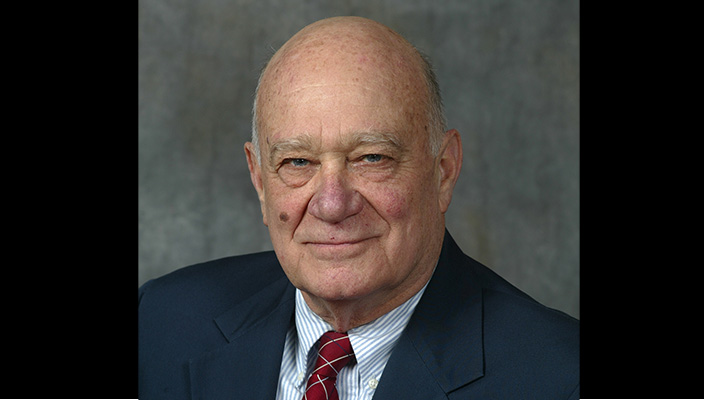Decades before women achieved the 19th Amendment, legally guaranteeing the vote to all adults in the nation, they won suffrage rights in several states.
But even as they were making advances, the ever-perspicacious Susan B. Anthony and Elizabeth Cady Stanton gave this admonitory view in their magazine “The Revolution.”
“The ballot is not even half a loaf; it is only a crust, a crumb.” Star historian Robert Caro would be proud of the Stanton-Anthony recognition that structures need to be bolstered by substance for power to influence policies and practices.
I make this side mention of Caro’s brilliant new book, “Working,” because no analyst has done more than he in examining the intersections of power acquisition and its effects on individuals and societies.
Credit goes to Anthony and Stanton’s tough realism for recognizing that women could only have significant influence if they used the vote for their priorities and if they built organizations that could sustain their involvement and their values.
Like most American protest movements (including Whigs of the 1770s, abolitionists, peace advocates, and civil rights leaders) the feminist vote movement had a variety of leaders and organizations. These groups usually had a keen sense of shared goals, but that did not exempt them from personal differences and conflicts regarding strategies and tactics.
The two major disciples of the radicalism of Anthony and Stanton were Alice Paul and Harriet Stanton Blatch; they deserve more recognition. In the final push for 1920 ratification their approaches often differed from those of Carrie Chapman Catt.
However, it is significant that the major suffragist leaders understood that the vote was closely tied to appraisals of cultural and gender norms. As William Chafe shows in “Women and Equality,” sexism proceeded from visual perception (as with racism and ageism), and initiatives to move from social control to social change necessitated extraordinary leadership and staying power.
The long battle for votes for women and an expanded role beyond gender, not surprisingly, had its origins during the American Revolution.
While Abigail Adams’ now-famous “Dear John” letter to her husband was private in 1776, her views were shared by other women who, in various ways, were part of the “Daughters of Liberty.” As in the cases of ordinary men and Negroes during the 1770s, little historical attention was paid to those considered in the subordinate groups of society.
But when Abigail urged John to “Remember the Ladies,” she was tapping the “contagion of liberty” that was unleashed by the protest against England. She wrote: “If particular care and attention are not paid to the Ladies we are determined to foment a Rebellion, and will not hold ourselves bound by any laws in which we have no voice, or Representation.” Her contemporary radicals Mercy Otis Warren and Judith Sargent Murray were actively expanding the roles of women. New Jersey, in the Spirit of ’76, recognized women as voters (albeit for a short time).
Men like Paine and Jefferson joined others in boosting the idea of “Republican Motherhood.” While this was still gender-based, it called on women to make new kinds of contributions to a citizen-based society.
It is no accident that Elizabeth Cady Stanton, at the 1848 Seneca Falls Convention, recast Jefferson’s Declaration of Independence, calling for gender equities and the vote for women. She began her “Declaration” with “We hold these truths to be self-evident; that all men and women are created equal.”
She emphasized: “The history of mankind is a history of repeated injuries and usurpations on the part of man toward woman, having in direct object the establishment of an absolute tyranny over her. To prove this, let facts be submitted to a candid world.”
Where Jefferson had itemized grievances against King George III, Stanton’s list indicted the “male sex.” The half-century staying power of Stanton, Anthony, and others they recruited, speaks to the enduring significance of these leaders.
But, the time needed to accomplish changing views of women also reveals the enormous challenges in confronting sexism, not only in the U.S. but everywhere in the world.
Stanton died in 1902, Anthony in 1906. Not only did they create the scaffolding for the 19th Amendment before the 20th century began, but they also contributed to achieving the vote for women in eleven Western American states prior to WWI. Over many decades, they framed gender views that now appear in Helen Fisher’s 21st century book, “The First Sex” (her response to Simone deBeauvoir’s “Second Sex”).
The campaign for American female suffrage and the cultural changes that were integral to it is one of the great protest and reform sagas in world history. It is obviously too vast to address in a brief column, but the 19th Amendment centennial in 2020 is likely to foster deeper considerations about all aspects of gender in our society.
It may even give a boost to the renewed effort for an Equal Rights (ERA) constitutional amendment, thus prompting deserved attention to Alice Paul’s leadership, with her continued advocacy for an ERA, and her preference for a “Woman’s Party” (over the League of Women Voters (boosted by Catt).



